
Empis livida is a species of fly in the Empididae family. It is included in the subgenus Kritempis of the genus Empis. Males range from 7.5 to 9.3 millimetres, females 7.5 to 10.2 millimetres. The male's abdomen is brownish and its wings appear faintly brown and clouded. The female's abdomen is gray and its wings are clear. E. livida lives in hedgerows, feeding on the nectar of several species of Rosaceae, several species of Asteraceae, and Heracleum sphondylium nectar; they also feed on other insects. They live all across temperate and Northern Europe, the only species with such a wide distribution. E. livida larvae are also carnivorous and live in damp soil and leaf litter. Adults fly in between April and July.

Rhamphomyia sulcata is a species of dance flies, in the fly family Empididae. It is included in the subgenus Rhamphomyia. It is found in most of Europe, except the Balkan Peninsula.
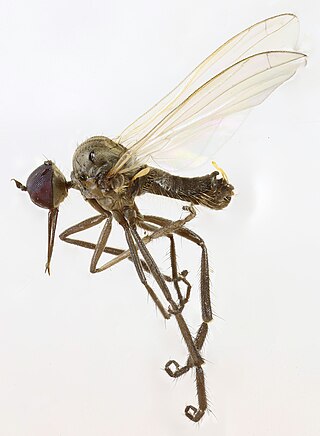
Empis albinervis is a species of fly in the family Empididae. It is included in the subgenus Coptophlebia of the genus Empis. It is found in the Palearctic.
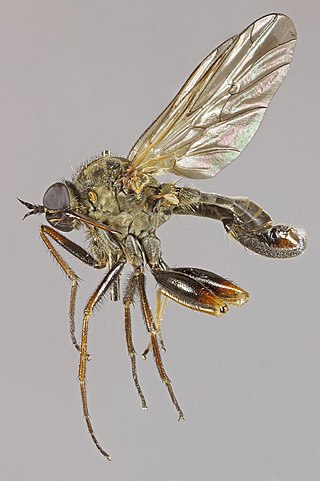
Empis femorata is a species of fly in the family Empididae. It is included in the subgenus Euempis. It is found in the Palearctic.
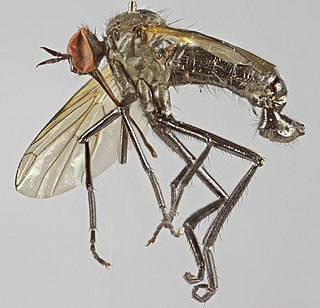
Empis lucida is a species of fly in the family Empididae. It is included in the subgenus Anacrostichus. It is found in the Palearctic. It is a large (8–10 mm.) shining black species.

Empis nigripes is a species of fly in the family Empididae. It is included in the subgenus Empis. It is found in the Palearctic realm.

Empis verralli is a species of fly in the family Empididae. It is included in the subgenus Anacrostichus. It is found in the Palearctic.

Rhamphomyia albohirta is a species of fly in the family Empididae. It is included in the subgenus Aclonempis. It is found in the Palearctic.
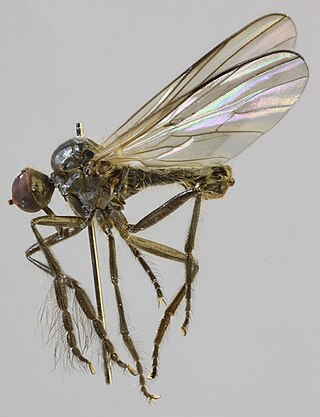
Rhamphomyia hirsutipes is a species of fly in the family Empididae. It is include in the subgenus Amydroneura of the genus Rhamphomyia. It is found in the Palearctic.
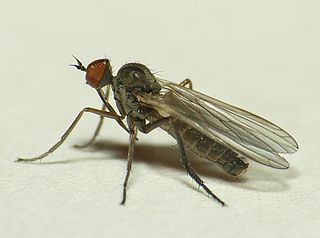
Empis nuntia is a species of fly in the family Empididae. It is included in the subgenus Empis. It is found in the Palearctic.
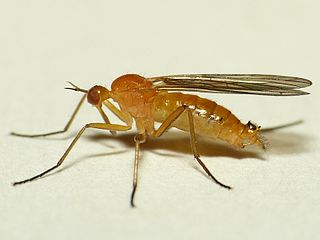
Empis lutea is a species of fly in the family Empididae. It is included in the subgenus Xanthempis. It is found in the Palearctic.
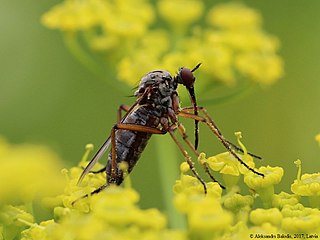
Empis rustica is a species of fly in the family Empididae. It is included in the subgenus Leptempis. It is found in the Palearctic.
Empis bicuspidata is a species of fly in the family Empididae. It is included in the subgenus Empis. It is found in the Palearctic.
Empis limata is a species of fly in the family Empididae. It is included in the subgenus Empis. It is found in the Palearctic.
Empis praevia is a species of fly in the family Empididae. It is included in the subgenus Empis. It is found in the Palearctic.
Empis woodi is a species of fly in the family Empididae. It is included in the subgenus Empis. It is found in the Palearctic.
Empis nitida is a species of fly in the family Empididae. It is included in the subgenus Anacrostichus. It is found in the Palearctic.

Empis nigritarsis is a species of fly in the family Empididae. It is included in the subgenus Lissempis of the genus Empis. It is found in the Palearctic.
Empis punctata is a species of fly in the family Empididae. It is included in the subgenus Xanthempis. It is found in the Palearctic.
Empis sinuosa is a species of fly in the family Empididae. It is included in the subgenus Leptempis. It is found in the Palearctic.













